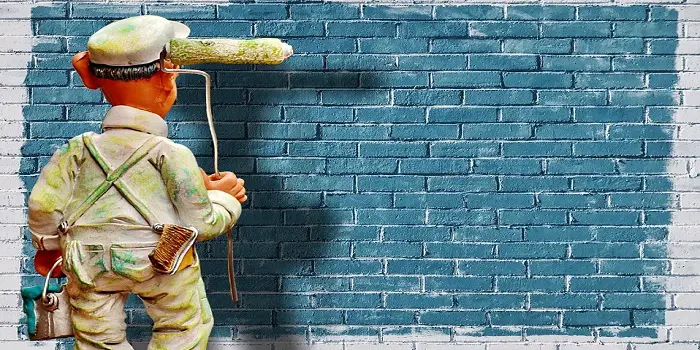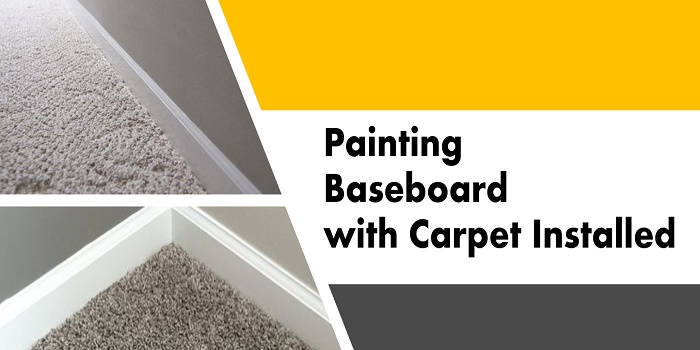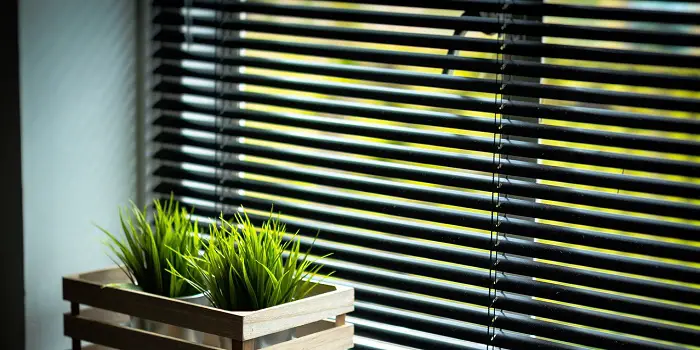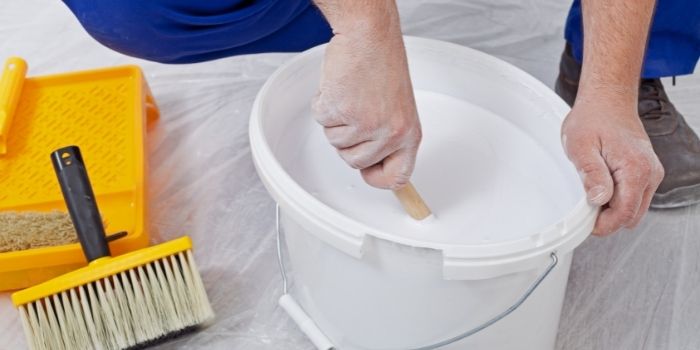
As a house painter, you know your paint is important. You want the colors to be bright and true, and you don’t want them to dry out before you have a chance to use them.
But what do you do if you’ve had some old paint sitting around for a while? Can you still use it with all its properties intact? How can you mix it so that it’s still usable? Keep reading for tips on how to breathe new life into an old paint can.
What's Here in the Article:
Why Should You Mix Your Paint?
If you’re like most painters, you have a few cans or containers of old paint that you’ve been meaning to get to. But for one reason or another, they’ve been pushed to the back of the shelf and forgotten about.
If this is the case, it’s time to bring them out and give them a good mix.
There are a few reasons why you should mix your paint regularly, even if you don’t think you’ll be using it anytime soon.
First, it prevents the expensive paints from drying out. Paint is made up of pigment particles suspended in a liquid binder. Over time, these particles can settle to the bottom of the container, leaving the liquid binder to evaporate. This not only makes the paint less vibrant but can also make it difficult to apply.
Second, mixing your paint ensures that the colors are true and consistent. When the paint dries, the pigments can change slightly in color. By mixing the paint regularly, you can prevent this from happening.
Third, mixing your paint helps to prevent it from becoming thick and goopy. Paint that hasn’t been mixed for a while can become lumpy and difficult to work with. By mixing it up, you can make it easier to apply to your walls or other surfaces.
How to Mix Your Old Paint?
It’s pretty easy to mix the paints and the good news is you can make it reusable for future projects without losing its properties. All you need is a paint stirrer and a bit of elbow grease. If you do it right you’ll not only save money but also reduce environmental impact by minimizing waste.
Step 1. Start by removing the lid from your paint container. If there is any dried paint around the rim, use a knife or paint scraper to remove it.
Step 2. Next, insert your paint stirrer into the paint and give it a good stir. Continue stirring until the pigment is evenly distributed throughout the binder.
Step 3. Once the paint is mixed, place the lid back and give it a shake. This will help to further mix the pigments and prevent them from settling.
If you find that the consistency of your paint is too thick, you can add a bit of water/solvent thinner to thin it out. Start with a small amount and add more as needed until you reach the desired consistency.
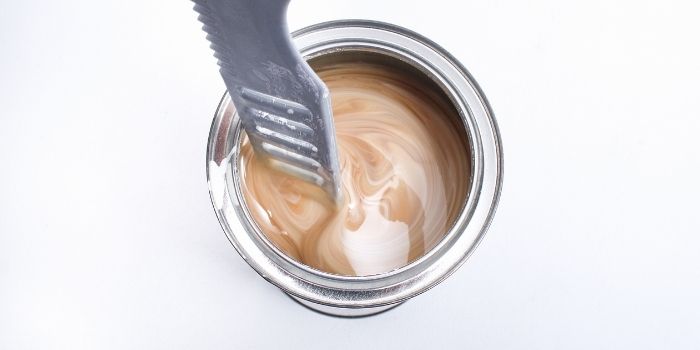
Shaken vs. Stirred – What’s the Difference?
When it comes to mixing paint, you might be wondering if it’s better to stir or shake the container.
Well, both methods will get the job done, but there is a bit of a difference between them.
Shaking your paint can help to distribute the pigments more evenly. This is because the pigments are suspended in the liquid binder and will settle to the bottom over time. By shaking the container, you can help to keep them evenly mixed.
Keep in mind that paint cans should be shaken before using them. It’s also a good idea to shake your paint occasionally during use, as this will help to keep the pigments from settling.
To shake your paint can, simply remove the lid and hold the can upside down. Give it a good shake, then put the lid back on and turn it right side up. Give the can another shake, then open it up and start painting.
Stirring your paint is more effective at preventing the pigments from drying out. This is because stirring helps to aerate the paint and prevents the liquid binder from evaporating.
Paint that has been sitting for a while should always be stirred before using it. To stir your paint, simply remove the lid and insert a paint stirrer into the can. Give it a good stir, then replace the lid and shake the can. This will help to further mix the pigments and prevent them from settling.
So which method you use should depend on your paint condition and project requirements.
If you’re looking for evenly mixed paint, shaking is the way to go. But stirring is a better option if you’re worried about the pigments drying out.
Share the post "How to Mix Paint That Has Been Sitting for a While?"

Douglas Becker (aka Painter Doug) has over twenty years of experience as a painter in Adkins, Texas. At present, he resides in Florida with his family.
From painting multi-storeyed houses, condos, and apartments to large commercial buildings and small offices, he had served various customers in areas not only in Adkins but also in Southwest Florida, Sarasota, Naples, and many more. To know more about him check here.

